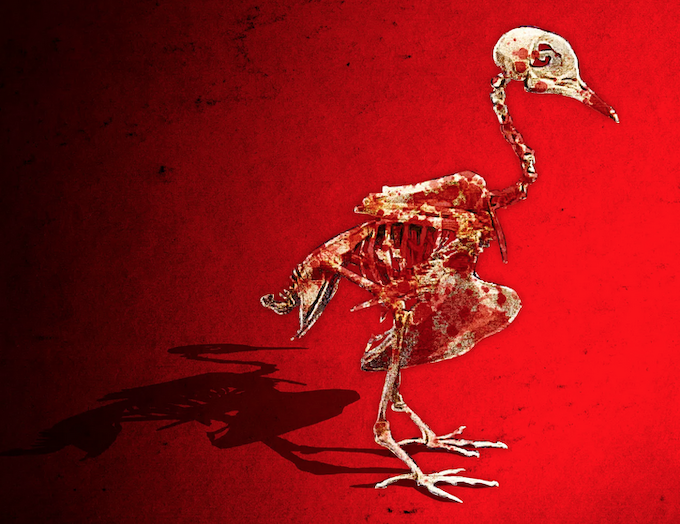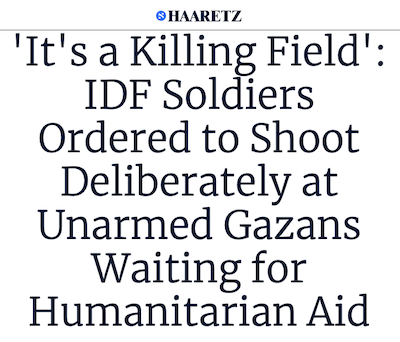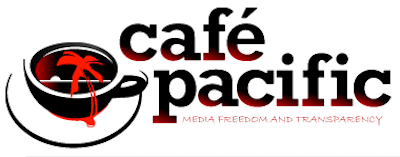ANALYSIS: By Chris Hedges
Israel’s weaponisation of starvation is how genocides always end.
I covered the insidious effects of orchestrated starvation in the Guatemalan Highlands during the genocidal campaign of General Efraín Ríos Montt, the famine in southern Sudan that left a quarter of a million dead — I walked past the frail and skeletal corpses of families lining roadsides — and later during the war in Bosnia when Serbs cut off food supplies to enclaves such as Srebrencia and Goražde.
Starvation was weaponised by the Ottoman Empire to decimate the Armenians. It was used to kill millions of Ukrainians in the Holodomor in 1932 and 1933.
- READ MORE: Gaza babies face starvation as Israel blocks entry of baby formula
- Other Chris Hedges Report articles

It was employed by the Nazis against the Jews in the ghettos in the Second World War. German soldiers used food, as Israel does, like bait. They offered three kilograms of bread and one kilogram of marmalade to lure desperate families in the Warsaw Ghetto onto transports to the death camps.
“There were times when hundreds of people had to wait in line for several days to be ‘deported,’” Marek Edelman writes in The Ghetto Fights. “The number of people anxious to obtain the three kilograms of bread was such that the transports, now leaving twice daily with 12,000 people, could not accommodate them all.”
And when crowds became unruly, as in Gaza, the German troops fired deadly volleys that ripped through emaciated husks of women, children and the elderly.
This tactic is as old as warfare itself.
Ordered to shoot
The report in the Israeli newspaper Ha’aretz that Israeli soldiers are ordered to shoot into crowds of Palestinians at aid hubs, with 580 killed and 4,216 wounded, is not a surprise. It is the predictable denouement of the genocide, the inevitable conclusion to a campaign of mass extermination.
Israel, with its targeted assassinations of at least 1400 health care workers, hundreds of United Nations (UN) workers, journalists, police and even poets and academics, its obliteration of multi-story apartment blocks wiping out dozens of families, its shelling of designated “humanitarian zones” where Palestinians huddle under tents, tarps or in the open air, its systematic targeting of UN food distribution centers, bakeries and aid convoys or its sadistic sniper fire that guns down children, long ago illustrated that Palestinians are regarded as vermin worthy only of annihilation.
The blockade of food and humanitarian aid, imposed on Gaza since March 2, is reducing Palestinians to abject dependence. To eat, they must crawl towards their killers and beg. Humiliated, terrified, desperate for a few scraps of food, they are stripped of dignity, autonomy and agency. This is by intent.
Yousef al-Ajouri, 40, explained to Middle East Eye his nightmarish journey to one of four aid hubs set up by the Gaza Humanitarian Foundation (GHF). The hubs are not designed to meet the needs of the Palestinians, who once relied on 400 aid distribution sites, but to lure them from northern Gaza to the south.
Israel, which on Sunday again ordered Palestinians to leave northern Gaza, is steadily expanding its annexation of the coastal strip. Palestinians are corralled like livestock into narrow metal chutes at distribution points which are overseen by heavily armed mercenaries. They receive, if they are one of the fortunate few, a small box of food.
Al-Ajouri, who before the genocide was a taxi driver, lives with his wife, seven children and his mother and father in a tent in al-Saraya, near the middle of Gaza City. He set out to an aid hub at Salah al-Din Road near the Netzarim corridor, to find some food for his children, who he said cry constantly “because of how hungry they are.”
On the advice of his neighbour in the tent next to him, he dressed in loose clothing “so that I could run and be agile.” He carried a bag for canned and packaged goods because the crush of the crowds meant “no one was able to carry the boxes the aid came in.”
Massive crowds
He left at about 9 pm with five other men “including an engineer and a teacher,” and “children aged 10 and 12.” They did not take the official route designated by the Israeli army. The massive crowds converging on the aid point along the official route ensure that most never get close enough to receive food.
Instead, they walked in the darkness in areas exposed to Israeli gunfire, often having to crawl to avoid being seen.
“As I crawled, I looked over, and to my surprise, saw several women and elderly people taking the same treacherous route as us,” he explained. “At one point, there was a barrage of live gunfire all around me. We hid behind a destroyed building. Anyone who moved or made a noticeable motion was immediately shot by snipers.
“Next to me was a tall, light-haired young man using the flashlight on his phone to guide him. The others yelled at him to turn it off. Seconds later, he was shot. He collapsed to the ground and lay there bleeding, but no one could help or move him. He died within minutes.”
He passed six bodies along the route who had been shot dead by Israeli soldiers.
Al-Ajouri reached the hub at 2 am, the designated time for aid distribution. He saw a green light turned on ahead of him which signaled that aid was about to be distributed. Thousands began to run towards the light, pushing, shoving and trampling each other. He fought his way through the crowd until he reached the aid.
“I started feeling around for the aid boxes and grabbed a bag that felt like rice,” he said. “But just as I did, someone else snatched it from my hands. I tried to hold on, but he threatened to stab me with his knife. Most people there were carrying knives, either to defend themselves or to steal from others.
Boxes were emptied
“Eventually, I managed to grab four cans of beans, a kilogram of bulgur, and half a kilogram of pasta. Within moments, the boxes were empty. Most of the people there, including women, children and the elderly, got nothing. Some begged others to share. But no one could afford to give up what they managed to get.”
The US contractors and Israeli soldiers overseeing the mayhem laughed and pointed their weapons at the crowd. Some filmed with their phones.
“Minutes later, red smoke grenades were thrown into the air,” he remembered. “Someone told me that it was the signal to evacuate the area. After that, heavy gunfire began. Me, Khalil and a few others headed to al-Awda Hospital in Nuseirat because our friend Wael had injured his hand during the journey.
“I was shocked by what I saw at the hospital. There were at least 35 martyrs lying dead on the ground in one of the rooms. A doctor told me they had all been brought in that same day. They were each shot in the head or chest while queuing near the aid center. Their families were waiting for them to come home with food and ingredients. Now, they were corpses.”
GHF is a Mossad-funded creation of Israel’s Defense Ministry that contracts with UG Solutions and Safe Reach Solutions, run by former members of the CIA and US Special Forces. GHF is headed by Reverend Johnnie Moore, a far-right Christian Zionist with close ties to Donald Trump and Benjamin Netanyahu.
The organisation has also contracted anti-Hamas drug-smuggling gangs to provide security at aid sites.
As Chris Gunness, a former spokesperson for the United Nations Relief and Work Agency (UNRWA) told Al Jazeera, GHF is “aid washing,” a way to mask the reality that “people are being starved into submission.”
Disregarded ICC ruling
Israel, along with the US and European countries that provide weapons to sustain the genocide, have chosen to disregard the January 2024 ruling by the International Court of Justice (ICJ) which demanded immediate protection for civilians in Gaza and widespread provision of humanitarian assistance.

“It’s a killing field” says a headline in the Ha’aretz newspaper. Image: Ha’aretz screenshot APR
Ha’aretz, in its article headlined “‘It’s a Killing Field’: IDF Soldiers Ordered to Shoot Deliberately at Unarmed Gazans Waiting for Humanitarian Aid” reported that Israeli commanders order soldiers to open fire on crowds to keep them away from aid sites or disperse them.
“The distribution centers typically open for just one hour each morning,” Haaretz writes. “According to officers and soldiers who served in their areas, the IDF fires at people who arrive before opening hours to prevent them from approaching, or again after the centers close, to disperse them. Since some of the shooting incidents occurred at night — ahead of the opening — it’s possible that some civilians couldn’t see the boundaries of the designated area.”
“It’s a killing field,” one soldier told Ha’aretz. “Where I was stationed, between one and five people were killed every day. They’re treated like a hostile force — no crowd-control measures, no tear gas — just live fire with everything imaginable: heavy machine guns, grenade launchers, mortars. Then, once the center opens, the shooting stops, and they know they can approach. Our form of communication is gunfire.”
“We open fire early in the morning if someone tries to get in line from a few hundred meters away, and sometimes we just charge at them from close range. But there’s no danger to the forces,” the soldier explained, “I’m not aware of a single instance of return fire. There’s no enemy, no weapons.”
He said the deployment at the aid sites is known as “Operation Salted Fish,” a reference to the Israeli name for the children’s game “Red light, green light.” The game was featured in the first episode of the South Korean dystopian thriller Squid Game, in which financially desperate people are killed as they battle each other for money.
Civilian infrastructure obliterated
Israel has obliterated the civilian and humanitarian infrastructure in Gaza. It has reduced Palestinians, half a million of whom face starvation, into desperate herds. The goal is to break Palestinians, to make them malleable and entice them to leave Gaza, never to return.
There is talk from the Trump White House about a ceasefire. But don’t be fooled. Israel has nothing left to destroy. Its saturation bombing over 20 months has reduced Gaza to a moonscape. Gaza is uninhabitable, a toxic wilderness where Palestinians, living amid broken slabs of concrete and pools of raw sewage, lack food and clean water, fuel, shelter, electricity, medicine and an infrastructure to survive.
The final impediment to the annexation of Gaza are the Palestinians themselves. They are the primary target. Starvation is the weapon of choice.
Chris Hedges is a Pulitzer Prize–winning journalist who was a foreign correspondent for 15 years for The New York Times, where he served as the Middle East bureau chief and Balkan bureau chief for the paper. He is the host of show “The Chris Hedges Report”. This article is republished from his X account.

